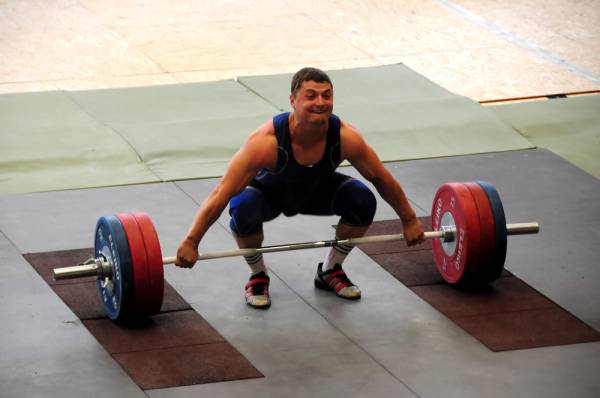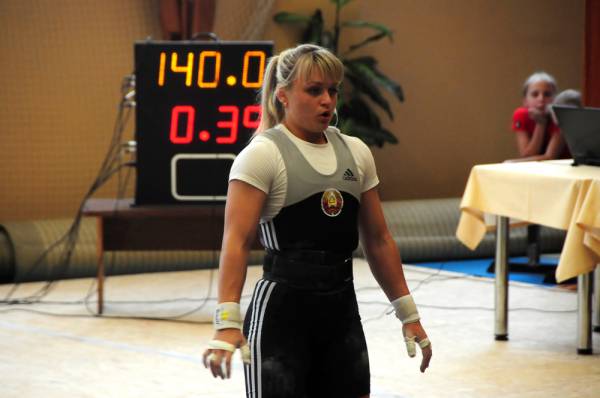We are a point in American weightlifting history where there is a relatively huge market demand for coaching weightlifting technique. Consequently some people are rushing to fill this need and have taken the CrossFit Oly Cert and the USAW L1 Cert. With a little work, they have learned enough coaching fundamentals to begin teaching technique to newcomers. Now, it is possible to continue on for years teaching technique to newbies, but eventually many of these students will master technique and still want to make continued progress.
Which Way to Go?
I’ve used for a couple of years the accompanying chart that I put together as a general representation of how the major components of weightlifting training manifest themselves in a rational long term training strategy. The horizontal axis is marked off in two-year increments, and the chart as a whole represents the training components for the first six years of development. It certainly is susceptible to individual adjustment, but it should serve as a good visual representation of the training process.
The numbers on the horizontal axis roughly represent training years.
I put this together to represent optimal conditions. The subjects in question should begin in their early teens and should be blessed with some degree of athletic talent that has been nurtured through appropriate physical activities during pre-adolescence. Those subjects not meeting these criteria will undoubtedly have to lengthen the green portions of the bars.
What this chart is meant to convey to the developing coach is that the training will need to have different emphases as the athlete progresses along the developmental pathway to full athletic maturity. If we look at the vertical slice of the chart during the first year, everyone is pretty much working at developing the same components. As each green portion of the bar is mastered and that component is represented by the crimson, the energies will be re-directed toward the still-green bars.
Keeping in mind that we are dealing with individuals, each person’s graph might look slightly different. The job of the coach is to use this chart to lay out a strategy for the achievement of full potential. I’ve shortened the green portions of the bars to indicate those areas that should be completed early in the development in order that the rest of the training will produce balanced results.
Here’s how my experience has shaped the thinking that went into the design of this chart:
Range of Motion
Athletes lacking in appropriate range of motion to perform the clean and jerk or snatch should perform movements that improve that range of motion. This includes weighted exercises that stretch the joints. They should be included frequently during the first year for those with problem areas and special emphasis on static stretching should be included toward the end of training sessions.
Remediation
Most athletes are imbalanced for weightlifting at the beginning of their careers. Any areas that are muscularly or neurologically underdeveloped need to perform movements that will bring those components up to par with the other areas of the body. Special emphasis must be given over to learning to fire the stabilizing muscles of the torso.

Technical Training
A significant part of each training session during the early months must be devoted to learning the proper technique of the snatch and clean and jerk. Any movement patterns of the arms and legs necessary for proper execution of the lifts must be emphasized and remediated during this early development. Rapid straightening of the elbows and knees must be developed.
Athleticism
Any individual entering into a weightlifting program needs to meet certain minimum requirements of athletic ability. This refers to movement patterns such as jumping, rapid arm extension, and the ability to quickly relax antagonists. The ability to balance on two feet also comes into play. Motor learning capacity and body awareness also fall into the category of athleticism. If these qualities are not already well developed, some concentrated attention must be placed on improving them. Ideally they should be somewhat developed by the time prospective weightlifters begin training during early adolescence. There is a limit to which this component can be improved in many individuals.
Adaptation for Training
This component refers to the ability of the body to withstand greater and greater training loads. Some attention must be given to gradually increasing the yearly load as an athlete develops. This cannot be done suddenly. Furthermore some attention must be given over to developing the restoration hygiene habits that are necessary to withstand high training loads. The progress of the development of this component may vary greatly depending largely on the size and age of the athlete in question.
Psychological Preparation
The development of the competitive psyche must be considered when planning the competition schedule. Talented individuals may not find early competition to be especially challenging and may not develop the proper competitive psyche as a result. The job of the coach is to continually focus the athlete’s attention on challenges, whether they are weights or championships or other competitors. The scope of the challenge will increase as the athlete progresses from local to national to international competition. The psyche must develop as well during this span of time.

Strength Training
This component must progress throughout the career of the lifter, although the rate decreases as the end of the career approaches. A Bulgarian coach once told me that talented weightlifters will continue to improve results after five years of steady training. His contention was that less talented athletes will reach their strength potential at less than five years. This is an interesting guideline, but one must take into consideration that he was dealing with well-supervised, professionally trained athletes. Anyway, training to get stronger must be a constant throughout the career of a weightlifter.
Conclusion
It is the job of the coach to learn to deal with all of these components and to compile a long-range training program that will take into consideration the different rates at which each component is mastered by the weightlifter in question. This means that several years must be spent mastering the coaching of each component until the coach is in a position to meld them together into a cohesive developmental strategy. This represents the art of coaching.
Photos courtesy of Shutterstock.






